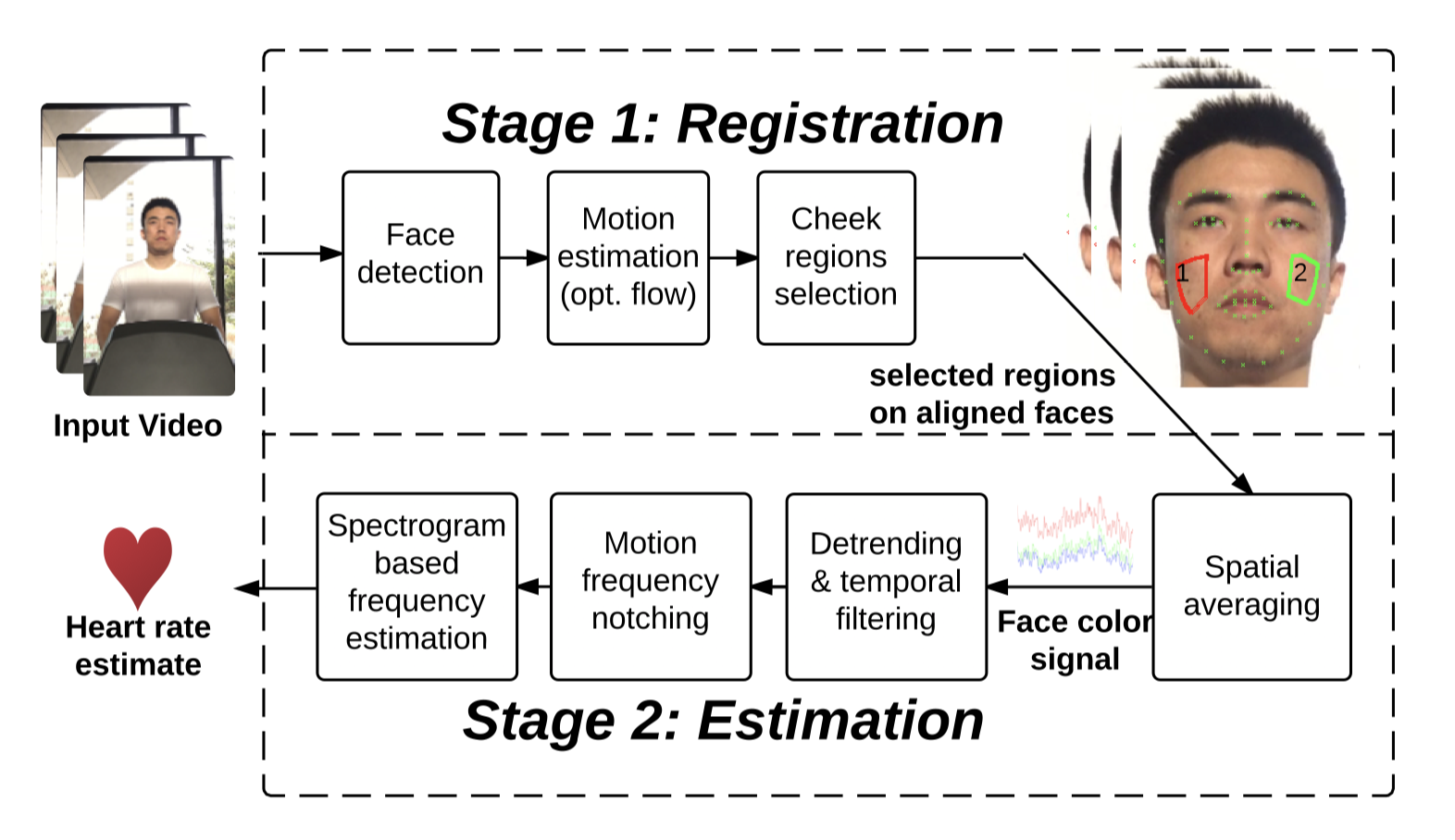Remote Vital Sign Monitoring Using Regular RGB Camera
Published in Electrical & Computer Engineering, University of Maryland, Collge Park, 2017

Abstract
Heart rate from videos was first demonstrated feasible in 2008, and since then most work has been focusing on still/rest cases or those with relatively small body motions. In contrast, less work has been on large motion scenarios such as fitness exercises. To extract pulse rate from video with siginificantIn this work, we propose a heart-rate monitoring method for fitness exercise videos. We focus on designing a highly precise motion compensation scheme with the help of the optical flow, and use motion information as a cue to adaptively remove ambiguous frequency components for improving the heart rates estimates. Experimental results show that our proposed method can achieve highly precise estimation with an average error of 1.1 beats per minute (BPM) or 0.58% in relative error.
Publications
- M. Chen, Q. Zhu, H. Zhang, M. Wu, and Q. Wang, “Respiratory Rate Estimation From Face Videos”, 2019 IEEE-EMBS International Conference on Biomedical and Health Informatics, 2019. [123/394=31% acceptance rate for regular paper][IEEE Xplore][arXiv]
- Q. Zhu, C.-W. Wong, C.-H. Fu and M. Wu, “Fitness Heart Rate Measurement Using Face Videos”, IEEE International Conference on Image Processing (ICIP), 2017. [IEEE Xplore][Postprint][Slides]
- M. Chen, Q. Zhu, M. Wu and Q. Wang, “Modulation Model of the Photoplethysmography Signal for Vital Sign Extraction”, IEEE Journal of Biomedical and Health Informatics, early access, Aug. 2020. [PDF]
Demo videos
Treadmill:
Elliptical Machine:
A Python-based system demo for realtime pulse rate estimation (face in-the-wild, in a Saturday’s crowded shopping center):